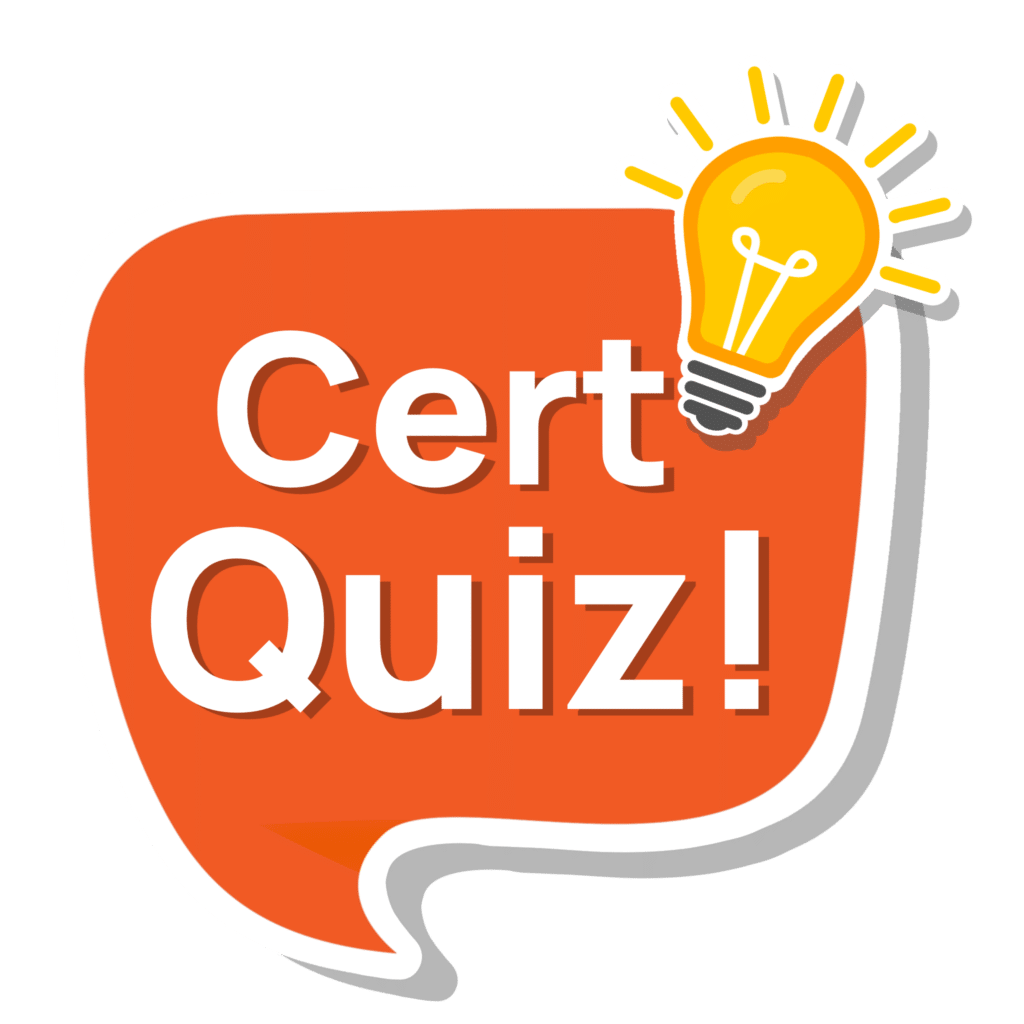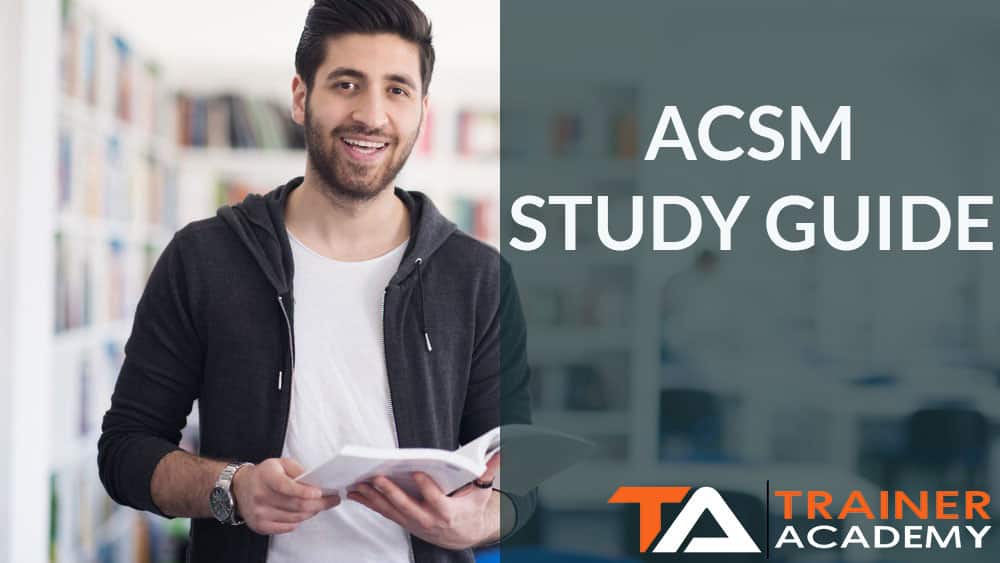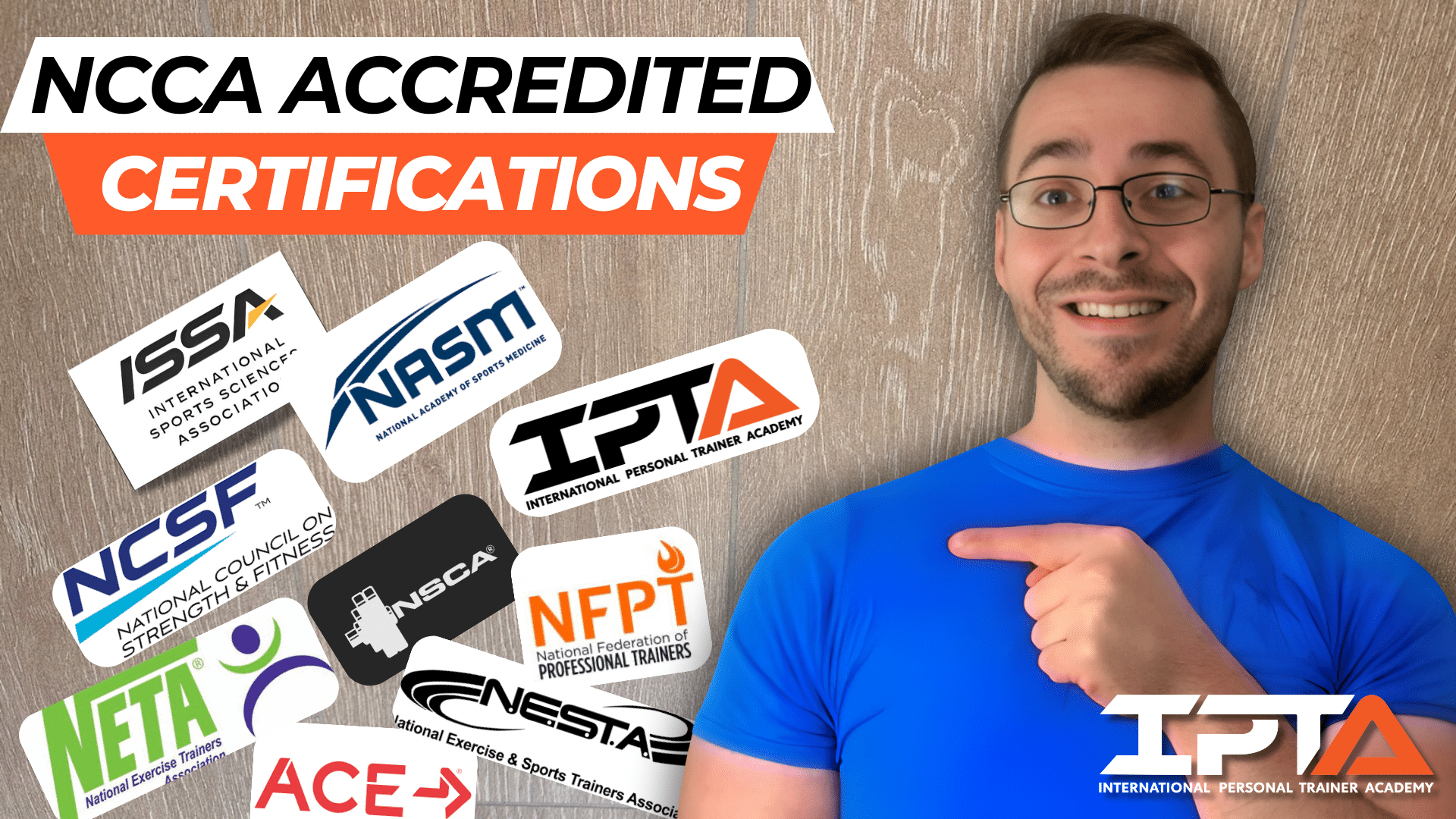
The ACSM certification has a strong focus on advanced research and education whereas the ACE certification covers change psychology and developing healthy habits with its Integrated Fitness Training (IFT) model. Both certifications are NCCA (National Commission for Certifying Agencies) accredited.
Let’s find out which one is best for you.
| CPT | ACSM vs ACE Quick Breakdown | Features | Price |
|---|---|---|---|

| ACSM CPT |
| View on ACSM Website |
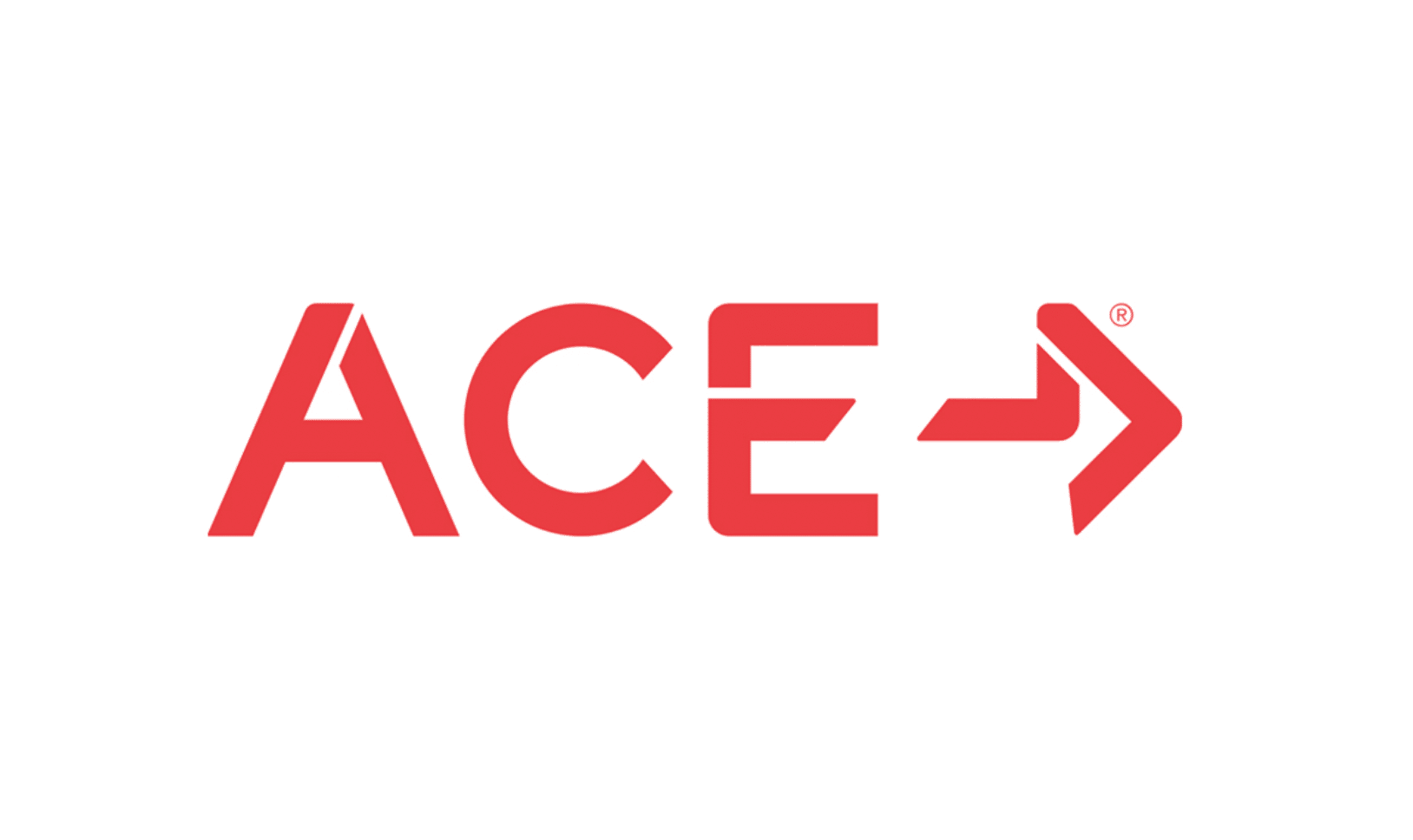
| ACE CPT |
| View on ACE Website |

- Exam cost: $349
- Packages: $619-999
- Requirements: CPR/AED, High School Diploma
- Passing Score: 550/800
- Pass Rate: 69%
- Average Completion Time: 3-6 Months

- Complete curriculum study preparation
- Audio guide, flashcards, and mnemonics
- 800+ practice questions
- Exam pass refund guarantee
- Cheaper pricing than premium materials

- Curriculum study preparation
- Includes text, graphics, and videos
- 200+ practice questions
- No exam pass refund guarantee
- $300+ for ACSM textbook and prep course (test not included)
- $636+ for ACE starter package
Exclusive TA Offers |
||
Most Popular Cert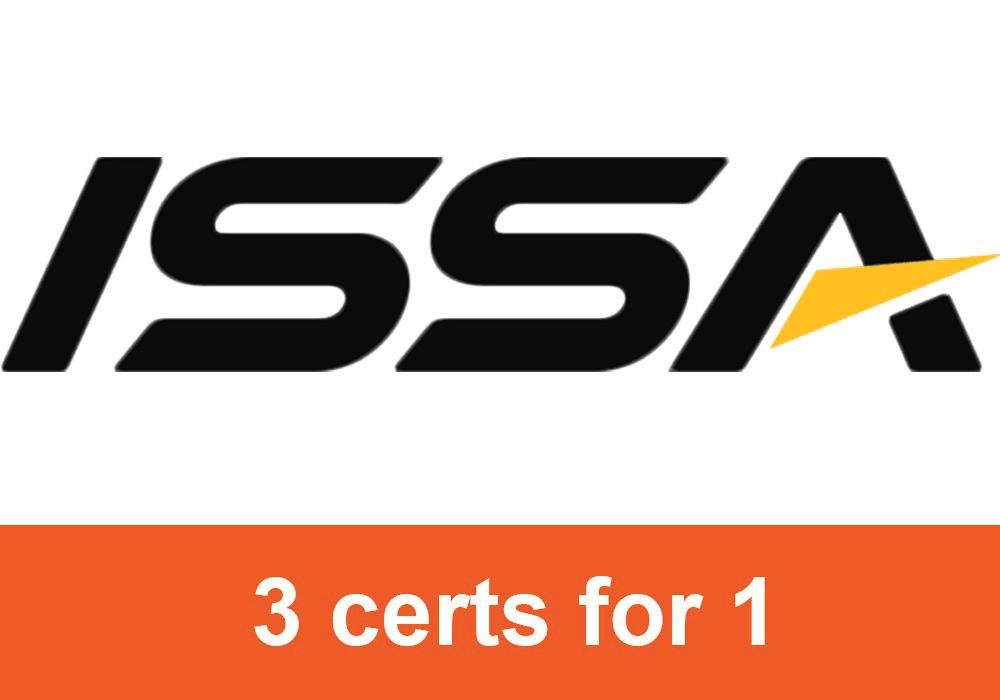
| Great Option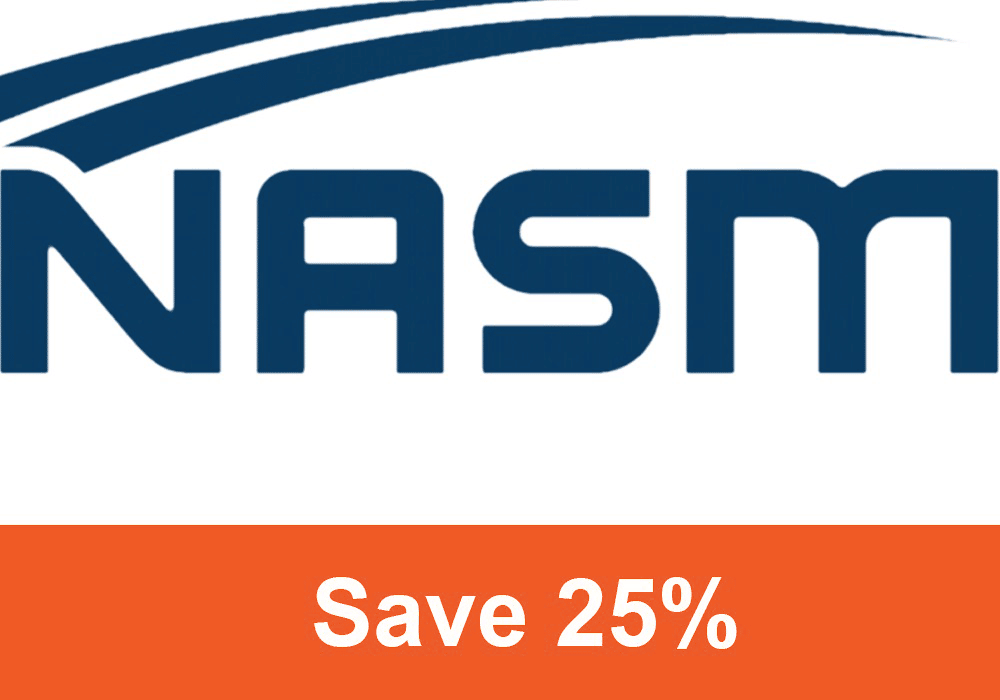
| Best Cert for you? 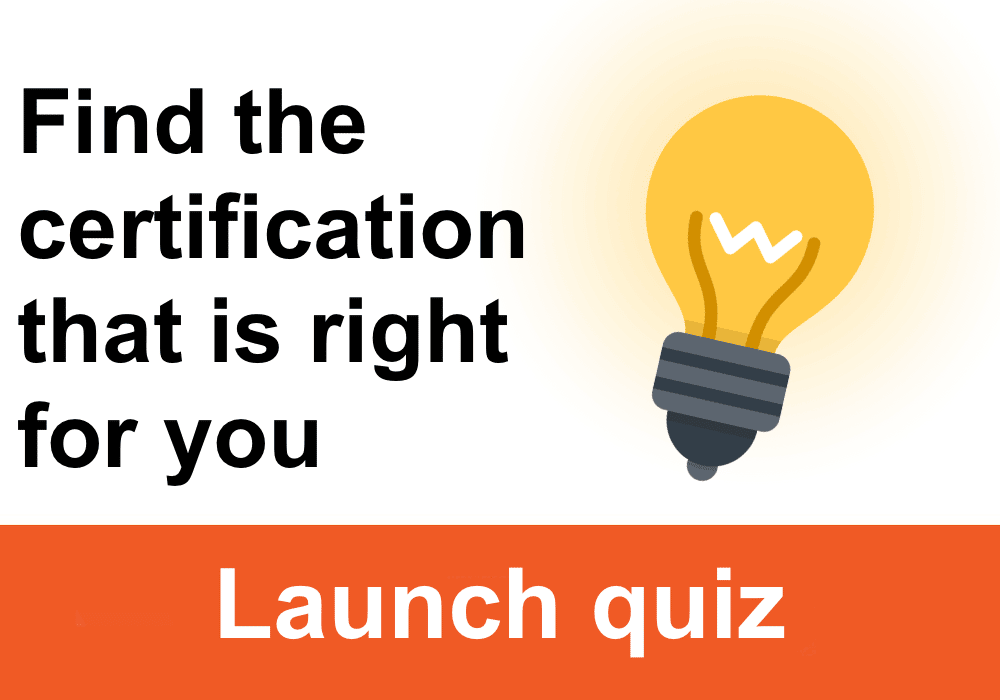
|
Good Option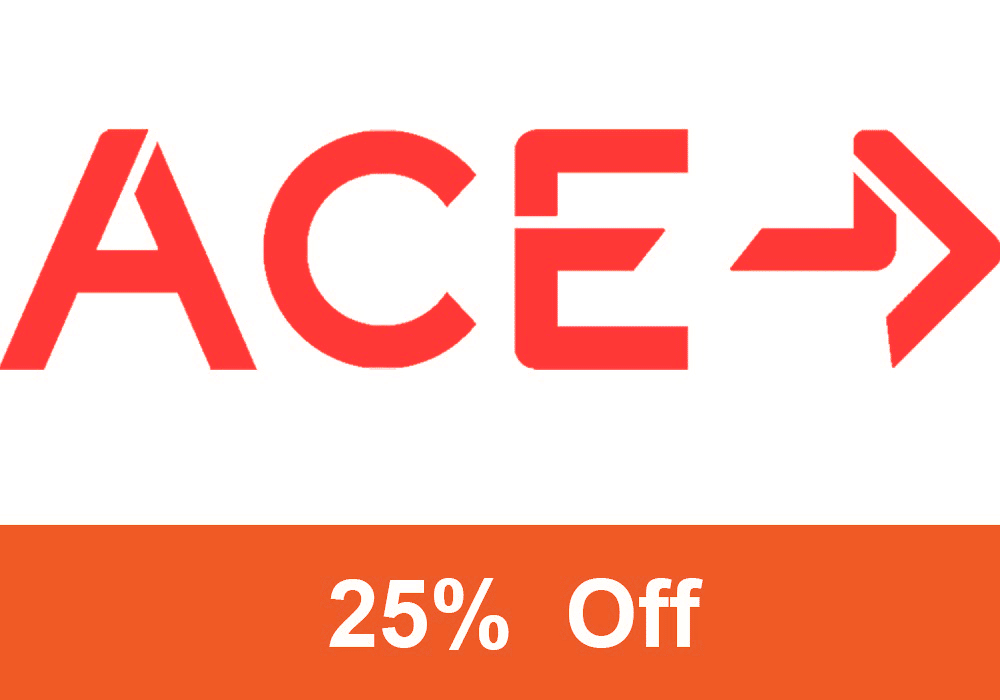
| Good Option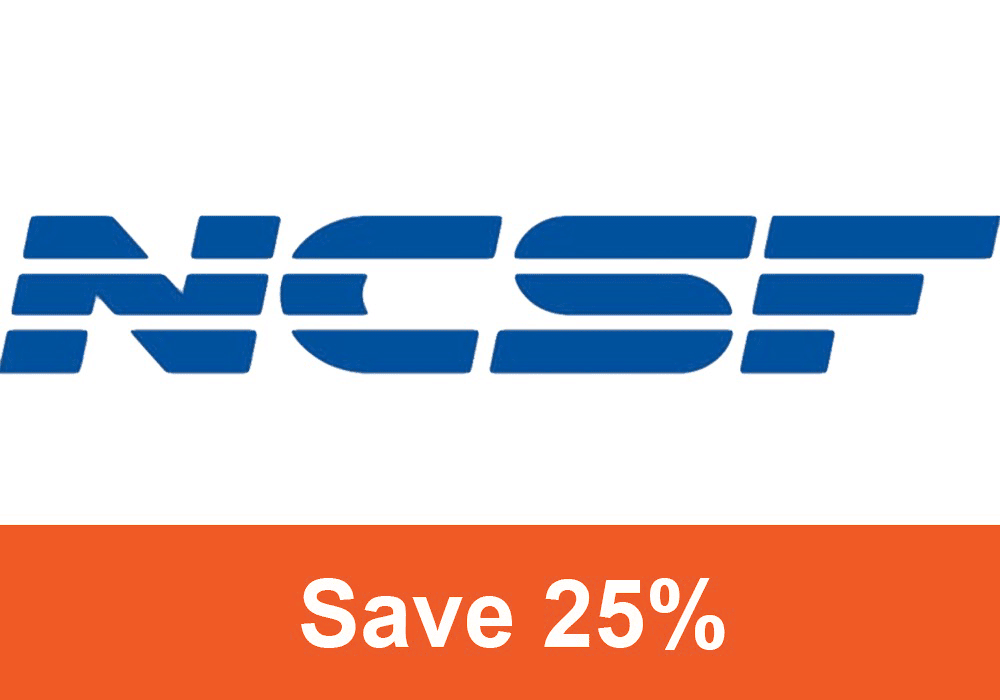
| Good Option
|
Quick Breakdown: ACSM vs ACE
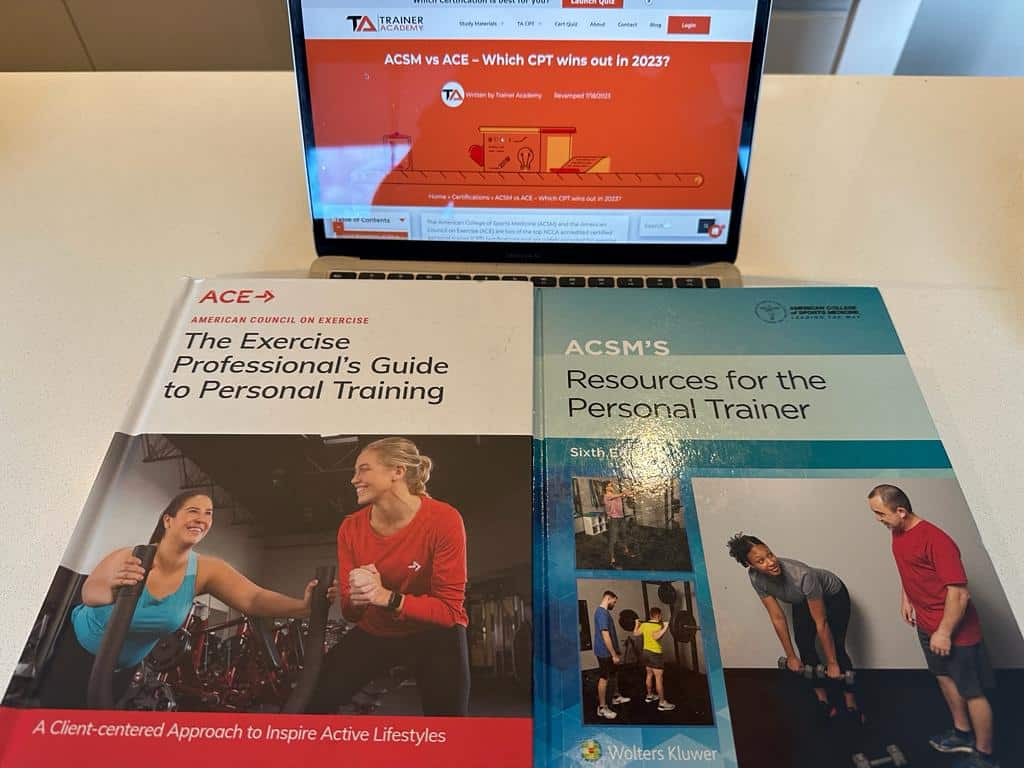
In my experience, the ACSM certification is ideal for trainers who aim to work with clinical populations and need a solid foundation in screening clients for chronic diseases. The ACSM curriculum dives deeply into anatomy and exercise science, making it an excellent choice if you’re looking to develop a more academic understanding of health and fitness. However, it does cover fewer hands-on, practical skills compared to other certifications.
On the other hand, the ACE certification focuses more on practical, real-world training methods, such as general resistance training and functional movement assessments. ACE’s Integrated Fitness Training® Model is particularly accessible for trainers working with general fitness clients, providing an easy-to-use framework that simplifies programming and helps you get clients moving effectively from the start.
If your primary goal is to work with gym-goers or general fitness clients, the ACE certification may be a better fit due to its practical, user-friendly approach. However, if you’re leaning toward working with clients in a clinical or rehabilitative setting, the ACSM certification offers valuable expertise in these areas.
Both ACE and ACSM are highly respected, nationally accredited certifications, offering excellent programs with opportunities for further specialization. They are both considered gold-standard credentials within the personal training industry.
ACE vs ACSM Content Comparison
I’ve put together a breakdown of the key knowledge areas in both the ACSM and ACE CPT curriculums, highlighting how each area applies to the real-world needs of personal trainers. This guide will help you see the strengths and specialties of each program, so you can choose the certification that best matches your career goals and the clients you aim to serve.
Fitness Industry and the Role of the Personal Trainer
Most fitness certifications begin with a foundational overview of public health, the fitness industry, and the essential role of a personal trainer in promoting wellness.
Both ACE and ACSM cover these basics similarly, discussing statistics on public health, activity rates, and chronic disease. I’ve found these insights valuable in understanding the increasing demand for fitness professionals. Additionally, both certifications introduce career paths, explaining options like working as an employee, independent contractor, or starting a business.
A unique aspect of ACSM’s curriculum is its inclusion of ‘fitness industry trends,’ which offers a look at emerging demands and shifts in the field—something ACE doesn’t specifically address. Despite this, the overall industry overview is similar in both certifications, ensuring they remain relevant for today’s fitness professionals.
The scope of practice sections in both programs are virtually identical, emphasizing a trainer’s professional boundaries and explaining when to refer clients to other health professionals, such as dietitians or chiropractors.
Anatomy and Exercise Science
In my journey through these CPT certifications, I noticed that both the ACSM and ACE programs approach anatomy and exercise science differently, each with unique strengths and limitations.
ACSM’s certification goes deep into the skeletal and muscular systems, covering everything from joint mechanics and muscle actions to exercise biomechanics and the muscular contraction process via the sliding filament theory.
ACSM includes essential knowledge on the cardiovascular, respiratory, and nervous systems, all spread across three detailed chapters that form the core of Section II in their curriculum.
While ACSM’s anatomy depth might seem excessive, I found that it gave me a solid foundation in programming.
For instance, when a client asks why a specific set and repetition scheme was chosen, I can confidently say, “10 reps is great for hypertrophy.” If they’re more curious, I can explain the physiological reasoning behind different rep ranges, ensuring they feel assured in my approach. This extra layer of understanding has proven invaluable, especially with clients who like to dig into the “why” of their workouts.
I learned that being able to articulate these deeper points builds trust and avoids those awkward moments of not knowing how to explain basic anatomy.
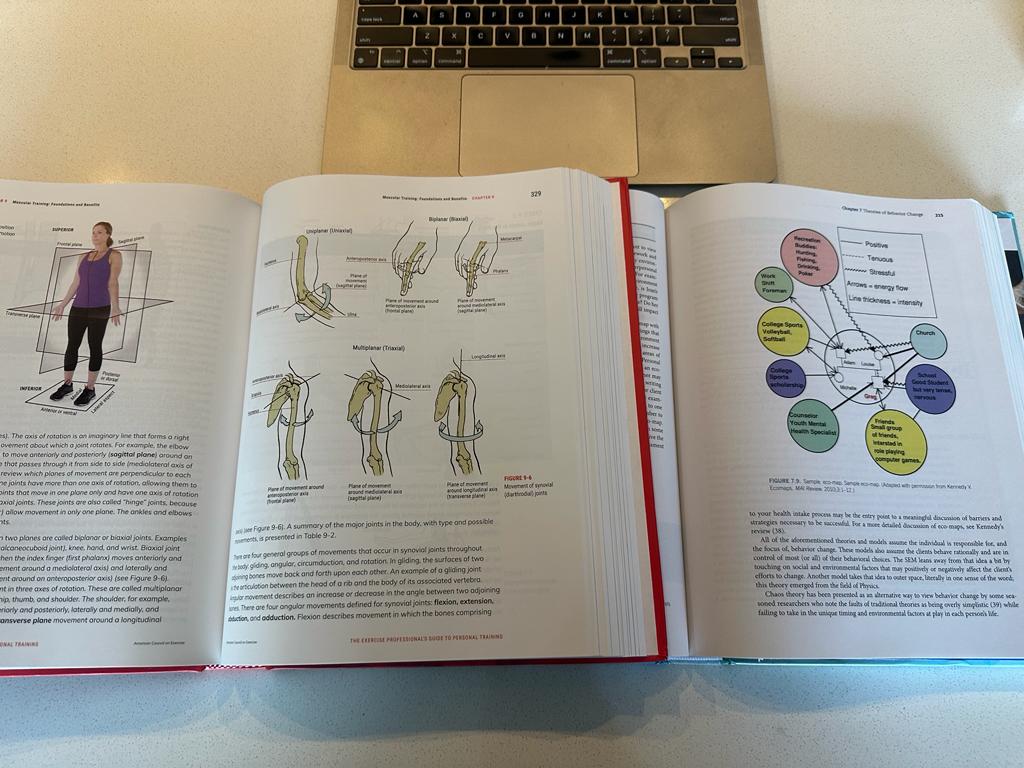
In contrast, ACE takes a more general approach. While the diagrams in the ACE and ACSM materials look similar, ACE’s layout might feel a bit more modern. However, ACE lacks the same level of anatomical detail.
They mention concepts of exercise physiology and biomechanics here and there, but there’s no dedicated section, let alone a single chapter, covering these in-depth.
Although this may be enough for developing effective programs, if you want to engage with clients who are more science-oriented, the ACE materials might not provide the robust background needed for a deeper discussion.
For those who anticipate working with curious clients, it might be worth supplementing ACE’s core knowledge with some additional anatomy and physiology resources. Some of ACE’s premium study packages include extra exercise science material, although it’s not tested on the exam itself.
Behavioral Change and Leadership
In my experience, understanding the psychology of behavior change, motivation, and how to foster long-term exercise habits is just as important as knowing how to create workout programs or demonstrate exercises.
These skills are crucial for any trainer aiming to help clients achieve sustainable results. While most trainers can put together effective programs, the best trainers act as leaders and mentors, inspiring clients to commit to lifelong health rather than just a quick transformation.
Both ACSM and ACE CPT certifications emphasize this essential area of personal training. ACSM, in particular, goes deep into behavior change theories, providing a comprehensive view with case studies to illustrate practical applications.
They cover models like the Transtheoretical Model of Change, health belief model, theory of planned behavior, social cognitive theory, SMART goal setting, small changes model, and socioecological theory. This range gave me tools to address different client mindsets and motivations.
ACE takes a simpler approach, focusing primarily on the Transtheoretical Model and SMART goal setting, both widely accepted in fitness certifications. Although this is more basic than ACSM’s approach, it still provides a solid foundation for guiding clients through positive behavior changes.
In the end, both certifications equip trainers to support clients in making the mindset shifts necessary for lasting progress. However, for trainers who want to go deeper into behavior psychology and motivation techniques, ACSM offers a bit more depth, which has been invaluable in my work with clients looking for long-term change.
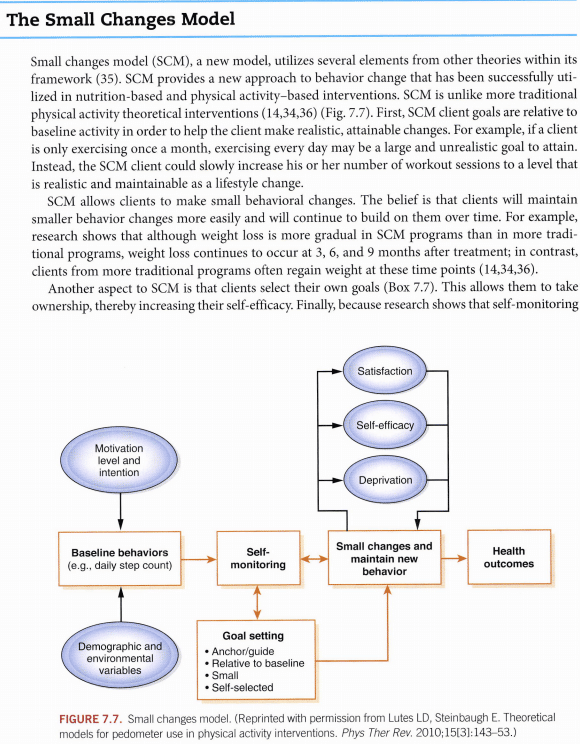
Exclusive TA Offers |
||
Most Popular Cert
| Great Option
| Best Cert for you? 
|
Good Option
| Good Option
| Good Option
|
Client Pre-participation Screening and Assessments
Whenever I take on a new client, we always start with a thorough screening process. This begins with an initial consultation, where I not only get to know the client’s goals and motivations but also begin to build rapport and lay the foundation for a positive trainer-client relationship. This consultation is key, as it’s the first real opportunity to show clients how I can support them on their fitness journey.
Once a client commits to training, we go through essential paperwork: a waiver, a general medical history questionnaire, and a PAR-Q form. These steps ensure both the client’s safety and my own liability coverage.
Both ACSM and ACE certifications emphasize similar processes in initial consultations, including strategies for building rapport and a structured approach to pre-participation screening.
The ACE certification particularly stands out for its details on rapport-building, covering conversational techniques like making eye contact and showing empathy through expressions—small yet powerful ways to make clients feel understood and comfortable.
Although ACSM touches on these aspects as well, ACE offers a bit more guidance here, which I’ve found helpful in creating that initial trust with clients.
Once the consultation and paperwork are complete, we move on to pre-participation screenings, using medical history forms, PAR-Qs, and other standard documents. At this stage, I also conduct physical assessments to establish a baseline for tracking progress.
Both ACSM and ACE cover basic anthropometric and cardiovascular measurements, such as circumference and skinfold measurements, as well as aerobic tests like the Rockport walk test and step test.
The next phase—assessing postural and movement patterns—is where ACE really shines. ACE provides a detailed list of static and dynamic assessments, helping identify issues with posture and movement patterns that might need correction. This level of assessment has proven invaluable in designing personalized programs that support my clients in reaching their goals safely and effectively.
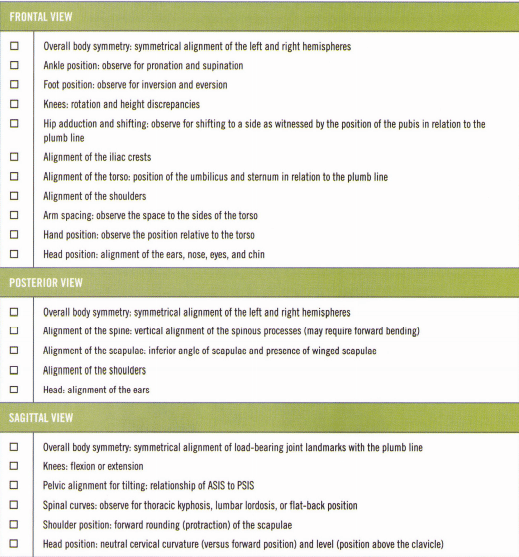
This includes five different variations of static posture issues that can come up on the plumb line assessment, with excellent diagrams illustrating these postural distortions.
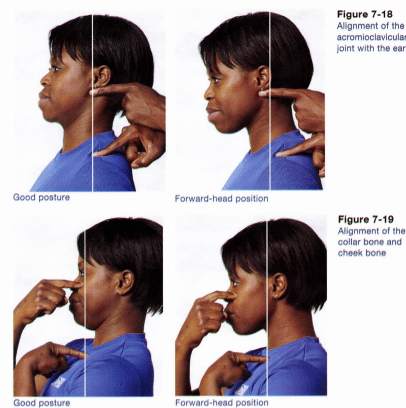
This also includes a list of probable tight and weak muscles associated with each distortion.
ACE then includes a battery of movement assessments, including squat assessments, pushing and pulling assessments, hurdle step screens, and thoracic mobility assessments to name just a few.
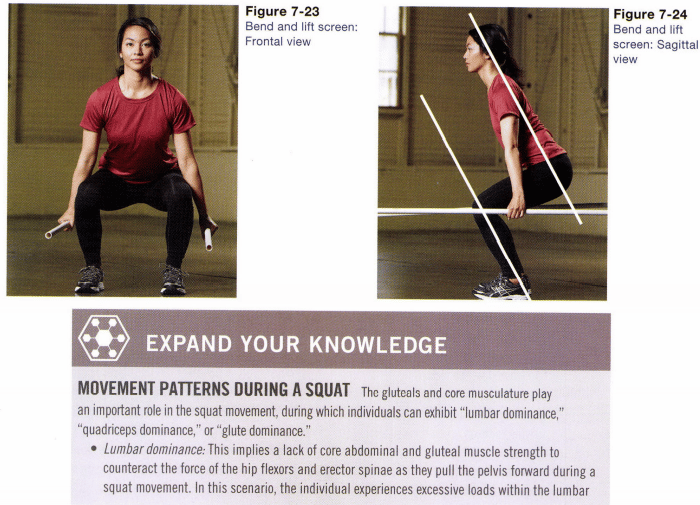
I’ve used many of the assessments offered by ACE for identifying and addressing movement issues before advancing clients to heavier resistance training. ACE provides a comprehensive set of assessments that cover most fitness clients’ needs, ensuring a solid foundation for safe progression.
ACSM, on the other hand, doesn’t dive as deeply into postural assessments or corrective techniques. It primarily covers the plumb line static posture assessment and rolling mechanics, but lacks the depth and visual aids necessary to guide these assessments effectively.
Understanding how to evaluate and correct poor movement patterns is crucial as a personal trainer. ACE’s thorough approach has given me the tools to confidently address limitations and set clients up for long-term success.
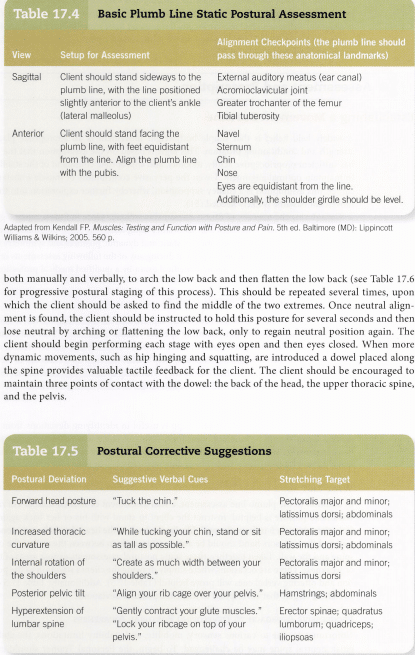
Personally, I believe the lack of movement assessments in ACSM’s curriculum is a noticeable gap, especially since most clients don’t naturally have perfect form with basic movements like squats, lunges, pushes, and pulls. Unlike ACE, which includes these assessments, ACSM omits them entirely, leaving trainers with limited tools for identifying and correcting movement issues early on.
Another challenge with ACSM is the sequence of topics—it covers resistance, aerobic, and flexibility training before addressing postural and movement assessments. Ideally, these assessments should be done in the first session to tailor the client’s program right from the start. Without them, it’s harder to create a truly customized program for each client.
While ACSM does provide some basic assessments, it doesn’t delve into corrective strategies, making ACE a much more practical choice for training clients with varied postural needs. For those pursuing ACSM, I recommend supplementing with additional assessments and corrective techniques to bridge this gap.
Additionally, ACE offers more performance assessments, such as the long jump and plyometric tests, which provide valuable insights into a client’s athletic abilities. In contrast, ACSM’s assessment tools are limited, making ACE the better option for trainers who want a full range of diagnostic tools.
Exercise Technique and Programming
Mastering exercise techniques and programming is crucial for being an effective trainer. I’ve found that knowing how to demonstrate exercises for every major muscle group and understanding how to build short-, medium-, and long-term programs is just the baseline. Both ACSM and ACE offer valuable insights on these skills, but I’ve noticed some key differences that make a real impact in day-to-day training.
The ACE Integrated Fitness Training® (IFT®) model, for instance, has been incredibly helpful in my work with clients. Its four phases, which progress from stability to performance, provide a clear, adaptable structure that lets me build well-rounded programs.
Each phase includes guidelines on flexibility, load management, exercise technique, and cardio, so I can seamlessly incorporate these elements into a cohesive plan. This practical approach means I’m not just creating programs. I’m also guiding clients through a tailored path that builds on their strengths and addresses their weaknesses.
In contrast, while ACSM covers the fundamentals of resistance, cardio, and flexibility training, it doesn’t emphasize how to integrate these areas effectively. I’ve had to find my own ways to balance these components for clients, which isn’t always ideal, especially when they have specific needs.
For example, clients with posture or movement issues often need a structured corrective phase before advancing to heavier lifting. ACE’s “IFT® Phase 1: Stability and Mobility Training” addresses this by focusing on posture, coordination, and movement quality early on, setting clients up for safer, more effective progress.
For me, ACE’s approach feels more comprehensive, and I’ve seen firsthand how following the IFT® model helps clients make steady, sustainable improvements.
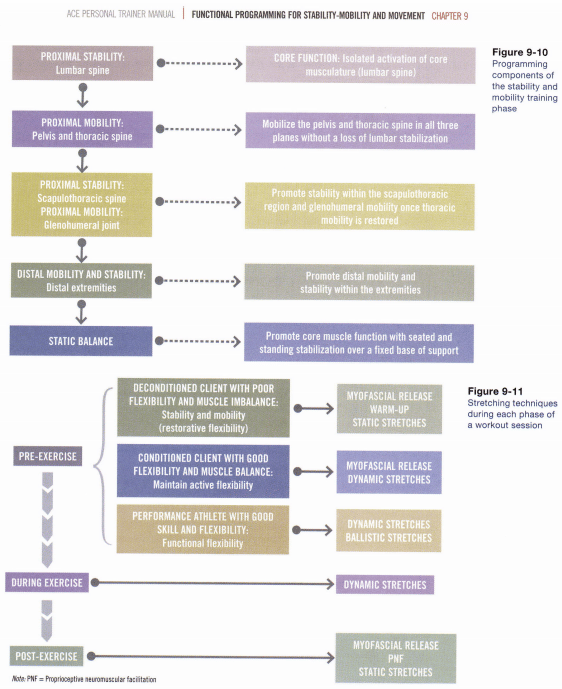
This structure allows an easy transition to resistance and performance training for any deconditioned general fitness clients.
The ACSM curriculum is simply not presented in a manner that allows you to coordinate these different areas of fitness.
In terms of exercise library, the ACSM has about 15 different exercises discussed, which is severely lacking.
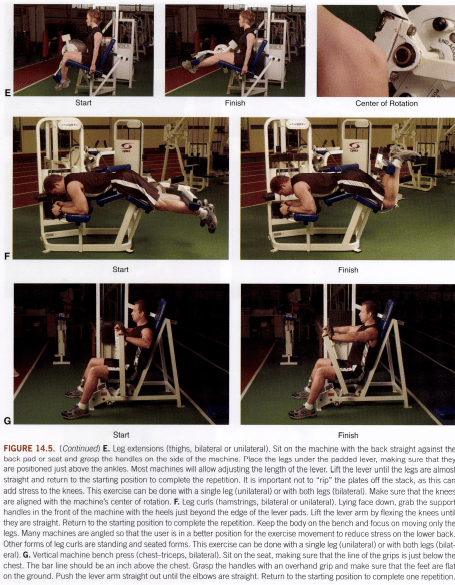
Additionally, ACSM does not discuss training clients through exercises of progressive difficulty for a movement pattern.
Although the ACE textbook does not include an exercise library, ACE includes a massive exercise library on its website with video and written descriptions for free along with your certification.
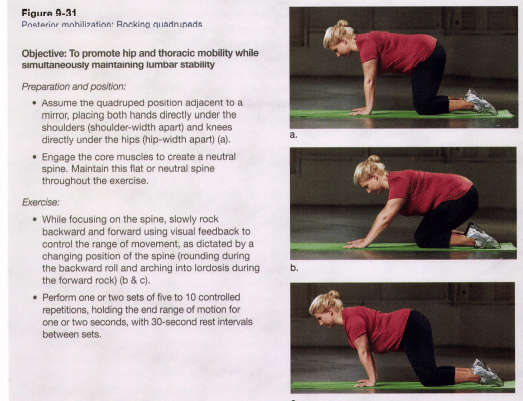
The ACE certification is not only an excellent study guide but also a go-to reference once you start working with clients.
One unique highlight is its coverage of mind-body exercise systems like Yoga and Tai Chi. Since many clients already engage in these practices, knowing how to blend resistance training with mind-body techniques has been invaluable in my experience, especially for clients looking for a well-rounded approach to fitness.
This focus on mind-body systems is something I haven’t found in other mainstream certifications, including ACSM. It gives ACE a practical edge, offering real-world programming skills that are ideal for general fitness clients. From my perspective, ACE’s emphasis on these techniques significantly boosts its value as a comprehensive resource for trainers.
Exclusive TA Offers |
||
Most Popular Cert
| Great Option
| Best Cert for you? 
|
Good Option
| Good Option
| Good Option
|
Special Population Training
Both ACSM and ACE certifications offer valuable guidelines for training special populations, covering groups like youth, pregnant women, older adults, and clients with chronic conditions.
I found ACSM’s guidelines for populations such as older adults and those with cardiovascular or metabolic diseases very straightforward and helpful. However, ACSM falls short in addressing other common conditions like asthma, fibromyalgia, and low back pain, which many clients experience.
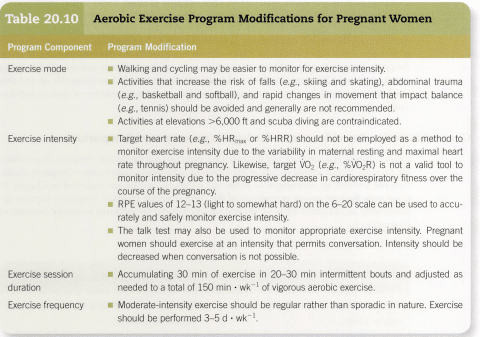
ACE, on the other hand, includes a broader array of conditions you’re likely to encounter, offering practical and detailed guidelines for each. This extra range has been particularly useful in my own training work, helping me feel prepared to support diverse client needs.
If you’re aiming to specialize in training clients with specific health concerns, ACE provides a solid foundation, though additional certifications focused on special populations can deepen your expertise further.
Business Skills for Personal Trainers
Success in the fitness industry hinges on strong business skills. Both ACE and ACSM do a good job introducing the essentials for trainers, covering areas like different employment options, marketing, sales, client retention, and financial planning.
I’ve found understanding how to calculate income goals, manage expenses, and project the number of sessions needed weekly to be invaluable skills to know.
While ACE and ACSM provide a solid foundation, business skills require ongoing learning as the industry evolves.
For instance, new technology and digital strategies constantly reshape how trainers can attract and retain clients. Although these certifications don’t go as in-depth as ISSA on business, they offer a helpful starting point for trainers, especially those just entering the field.
For trainers aiming to grow a career or launch an online business, continuous learning in marketing and client management is key. Both certifications prepare you with a general overview of business basics, but deepening this knowledge is essential for long-term financial success and achieving a high income as a personal trainer.
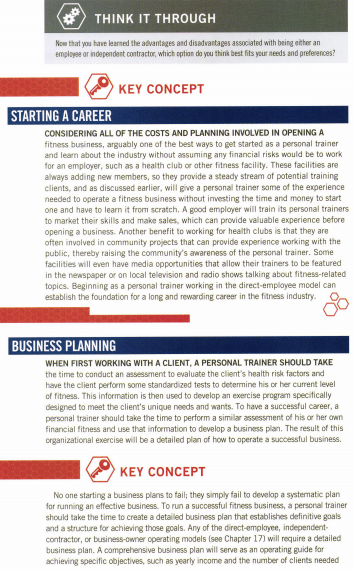
Study Materials
In preparing for my certification exams, I found that both ACE and ACSM provide an extensive range of study resources. The textbooks are the core of both programs, but I appreciated the ACE textbook’s clear organization and appealing layout, especially when covering key topics like client intake and program design. It made absorbing the information much easier.
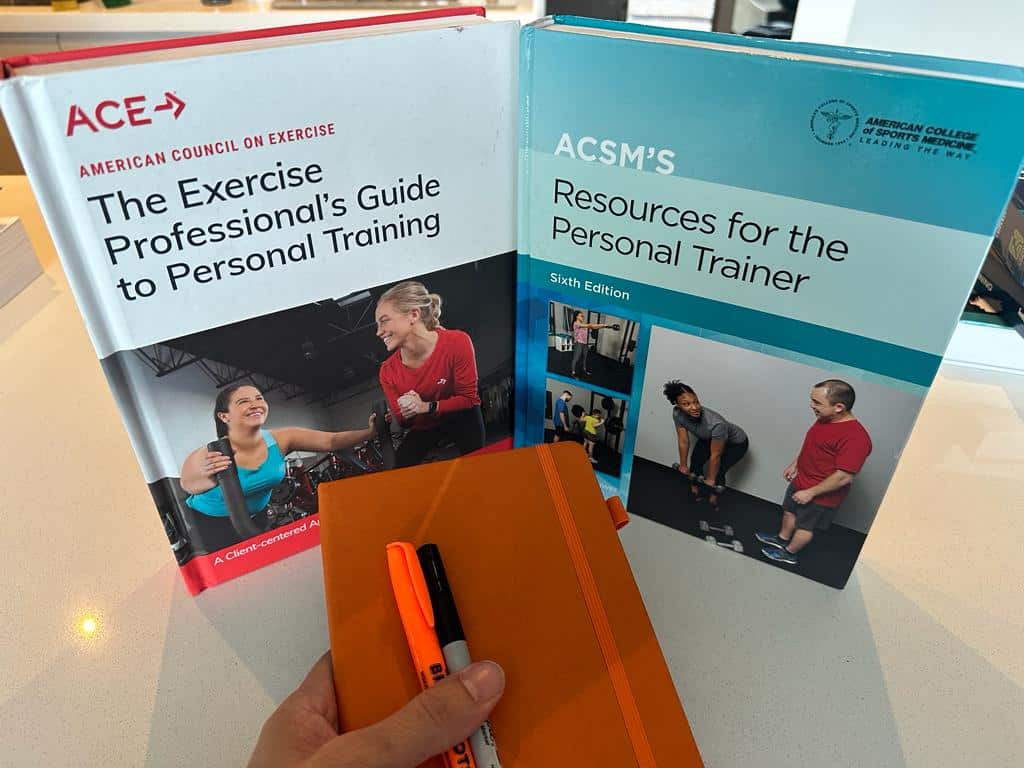
When it comes to supplementary study tools, ACE stands out as well. The ACE University portal offers interactive videos and lessons that are more engaging and easier to follow than ACSM’s slideshow and audio materials from PrepU. ACE’s study portal is divided into modular sections, making it ideal for self-paced learning, while ACSM’s online resources felt more clinical and less dynamic.
For additional study aids, ACE also has a wider selection of resources available for purchase, making it a more complete option for those who prefer company-provided materials. In terms of overall quality and variety in exam prep, ACE comes out ahead, especially if you’re looking for comprehensive tools to support your study process.
Pricing
Each certification allows you to take just the exam for a basic fee, without any additional study materials. For ACSM, every study resource is sold individually, including their main textbooks: Resources for the Personal Trainer and Guidelines for Exercise Testing and Prescription. They also offer PrepU’s slideshow and audio course, practice quizzes, and flashcards, which you can purchase separately based on what fits your learning style. Here’s a breakdown of ACSM’s pricing:
- Exam fee: $349
- Retake fee: $175
- Resources for the Personal Trainer (digital): $65
- Guidelines for Exercise Testing and Prescription (digital): $55
- PrepU slideshow and audio course: $270
- PrepU quiz engine (3-month subscription): starts at $65
With ACE, you can choose from bundled study packages that range from basic to comprehensive. You can also opt for the exam fee alone and buy the main ACE CPT textbook separately. Here’s the ACE pricing:
- Exam fee: $399
- Retake fee: $199
- BASIC study package: $599 (includes exam fee, ACE university study portal, one practice test, digital textbook, study companion, and ACE Answers Q&A)
- PLUS study package: $699 (includes all BASIC resources, more Q&A content, Exercise Science 101, hardcover textbook, and two practice tests)
- ADVANTAGE study package: $1049 (includes all PLUS resources, audio textbook, four practice tests, live Q&A webinars, and one-on-one tutoring)
Technically, the main textbooks for each certification contain all the essential material to pass. If you’re looking to keep costs down, the ACSM exam and textbook combination is the cheaper option. However, if you want robust study support, ACE’s bundled packages offer much more value.
You might also consider third-party prep materials like Trainer Academy, which offers comprehensive study packages with time-tested techniques, a 99% pass guarantee, and a money-back option if you don’t pass. This can be a more affordable way to get the resources you need for success on the first try.
So, what else are you waiting for? Check out the ACSM MVP Study Package and the ACE MVP Study Package here.
Continuing Education
Both ACE and ACSM certifications require personal trainers to earn continuing education credits (CEUs) to maintain their certification. These credits are completed through additional coursework offered by each organization, which has been a great way for me to stay updated and build new skills over time.
For ACSM, you need 45 CEUs and pay a $45 recertification fee every three years, while ACE requires 20 hours with a $129 fee every two years.
Both organizations offer a wide range of continuing education courses, covering topics like group exercise, kinesiology, strength and conditioning, fitness nutrition, and more.
One of the standout ACE courses is their Group Fitness Instructor certification, whereas ACSM’s Exercise Physiologist certification is well-regarded for trainers interested in clinical or exercise science roles.
Trainer Academy often recommends that new trainers consider additional certifications to make themselves more attractive to clients and gyms. A specialization in nutrition, group fitness, or even yoga or Pilates can significantly boost your marketability and open up more opportunities.
Additionally, you must have a current CPR/AED certification to sit for either the ACE or ACSM exams. It’s also essential to have a high school diploma or equivalent (like a GED) to meet the requirements set by the National Commission for Certifying Agencies (NCCA).
Exam Difficulty
Both the ACSM and ACE exams have about a 70% pass rate, making them relatively approachable compared to some other certifications like NASM. Despite covering a significant amount of material, the questions are generally straightforward. During my own exam prep, I found it helpful to remember that most multiple-choice questions allow you to easily eliminate one or two incorrect answers, giving you a decent chance of guessing correctly if needed.
There are no trick questions on either exam, but proper preparation is still essential to ensure you pass. Both exams emphasize cardiovascular risk factor screening, so it’s critical to know the cutoffs for different risk levels. ACE follows ACSM guidelines for this, so the information is essentially the same across both exams.
ACSM requires a bit more focus on anatomy, while ACE leans toward knowledge in movement assessments and program design. If you’re feeling anxious about passing, you might want to consider a prep program with an exam pass guarantee, which can take the stress out of any potential retake costs. Options like online courses or guided self-study often come with a retest guarantee.
Ultimately, choosing the right study method for your learning style will make the biggest difference. As long as you prepare well, passing the exam is entirely achievable.
ACSM vs ACE
| Certification | Best For | Base Exam Cost | Full Study Program Cost | CEU Requirements | CEU Fee |
|---|---|---|---|---|---|
| ACSM | Clinical exercise careers | $349 | $804 | 20 hours every 2 years | $129 |
| ACE | General fitness population training | $399 | $1049 | 45 hours every 3 years | $45 |
Frequently Asked Questions (FAQs)
Which certification is more respected, ACE or ACSM?
Both the ACE and ACSM certifications are NCCA accredited and widely respected across the fitness industry.
Each certification will start your career as a personal trainer. Your long-term goals in the fitness industry will determine which certification is best for you.
Which certification is best for bodybuilding?
Although ACE and ACSM both cover programming for hypertrophy, all things being equal, ACE is a better choice if you plan to train bodybuilders.
Which certification is more expensive?
Although prices are similar between ACSM and ACE, the ACE CPT costs more for the equivalent study packages when purchasing directly from each organization.
Which test is hardest?
The tests are fairly similar overall. The ACSM requires more memorization of different risk cutoff points, while ACE requires more focus on programming.
Which Certification is Best?
It’s time to decide which certification best suits your career path in fitness. Both ACE and ACSM have similar costs and difficulty levels, so the choice really depends on your long-term goals in the industry.
Each certification has its strengths. ACE is ideal if your focus is on the practical skills needed to train general fitness clients. In my experience, ACE’s straightforward approach to client coaching and its excellent continuing education options make it a solid choice for trainers aiming to work in mainstream fitness.
On the other hand, if you’re considering working with clinical populations or want a more in-depth understanding of anatomy and exercise science, ACSM might be the better fit. ACSM offers strong continuing education programs that open pathways into clinical and specialized work, providing a deeper dive into the science behind training.
No matter which route you choose, staying committed to ongoing education is crucial—not just to maintain your certification, but to succeed and grow in your career. Since both ACE and ACSM are NCCA-accredited, finding a job as a personal trainer should be straightforward once you pass the exam.
References
- Bryant CX, Green DJ, American Council On Exercise. ACE Personal Trainer Manual : The Ultimate Resource for Fitness Professionals. American Council On Exercise; 2010. https://www.amazon.com/ACE-Personal-Trainer-Manual-Professionals/dp/1890720143
- Acsm. Acsm’s Resources for the Personal Trainer. Wolters Kluwer; 2017. https://www.acsm.org/education-resources/books/resources-personal-trainer
- Melton DI, Katula JA, Mustian KM. The Current State of Personal Training: An Industry Perspective of Personal Trainers in a Small Southeast Community. Journal of Strength and Conditioning Research. 2008;22(3):883-889. doi: https://doi.org/10.1519/jsc.0b013e3181660dab






